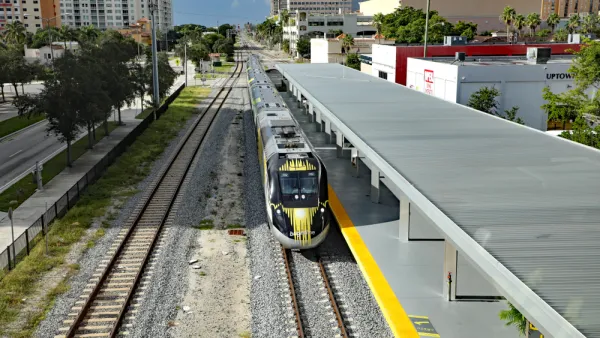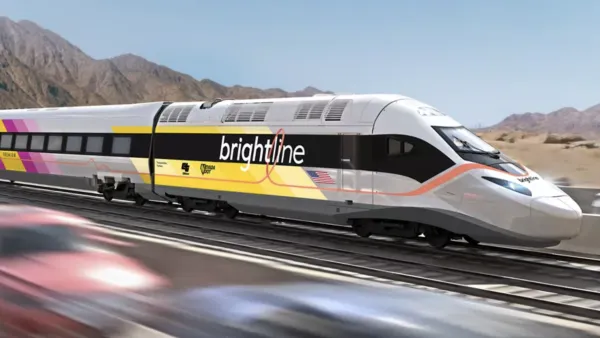The New York Times editors are wondering if high speed rail is a practical consideration for the U.S considering recent political developments where it has become popular to reject federal rail funds, so they asked six experts to present their views.
The Times notes several recent events that cause one to rethink whether high speed rail will indeed develop, President Obama's initial $8 billion investment notwithstanding.
Gubernatorial elections could spell doom for HSR in four states similar to how New Jersey's new Republican governor rejected a $3 billion federal rail investment . Amtrak produces a $117 billion, far-reaching plan for high speed rail in the Northeast with no identified funding. And let's not forget how some cities appear to be engaged in endless litigation to prevent elevated tracks from going through their communities, even though the tracks already exist at-grade.
In order, read six very different perspectives:
1. "A Measured Approach Can Work" by
Robert Puentes, Brookings Institution
2. "Habits Are Hard to Change" by
Jan K. Brueckner, economist, U.C. Irvine
3. "Fast Trains Are Coming" by
Joseph P. Schwieterman, professor, DePaul University
4. "Infeasible and Not Cost Effective" by
Sam Staley, Reason Foundation
5. "An Investment We Have to Make" by Robert D. Yaro, Regional Plan Association
6. "Improve Existing Railroads" by
Keith T. Poole, political scientist, University of Georgia.
Thanks to David Underwood
FULL STORY: Will We Ever Have High-Speed Trains?

National Parks Layoffs Will Cause Communities to Lose Billions
Thousands of essential park workers were laid off this week, just before the busy spring break season.

Retro-silient?: America’s First “Eco-burb,” The Woodlands Turns 50
A master-planned community north of Houston offers lessons on green infrastructure and resilient design, but falls short of its founder’s lofty affordability and walkability goals.

Delivering for America Plan Will Downgrade Mail Service in at Least 49.5 Percent of Zip Codes
Republican and Democrat lawmakers criticize the plan for its disproportionate negative impact on rural communities.

Test News Post 1
This is a summary

Test News Headline 46
Test for the image on the front page.

Balancing Bombs and Butterflies: How the National Guard Protects a Rare Species
The National Guard at Fort Indiantown Gap uses GIS technology and land management strategies to balance military training with conservation efforts, ensuring the survival of the rare eastern regal fritillary butterfly.
Urban Design for Planners 1: Software Tools
This six-course series explores essential urban design concepts using open source software and equips planners with the tools they need to participate fully in the urban design process.
Planning for Universal Design
Learn the tools for implementing Universal Design in planning regulations.
EMC Planning Group, Inc.
Planetizen
Planetizen
Mpact (formerly Rail~Volution)
Great Falls Development Authority, Inc.
HUDs Office of Policy Development and Research
NYU Wagner Graduate School of Public Service




























